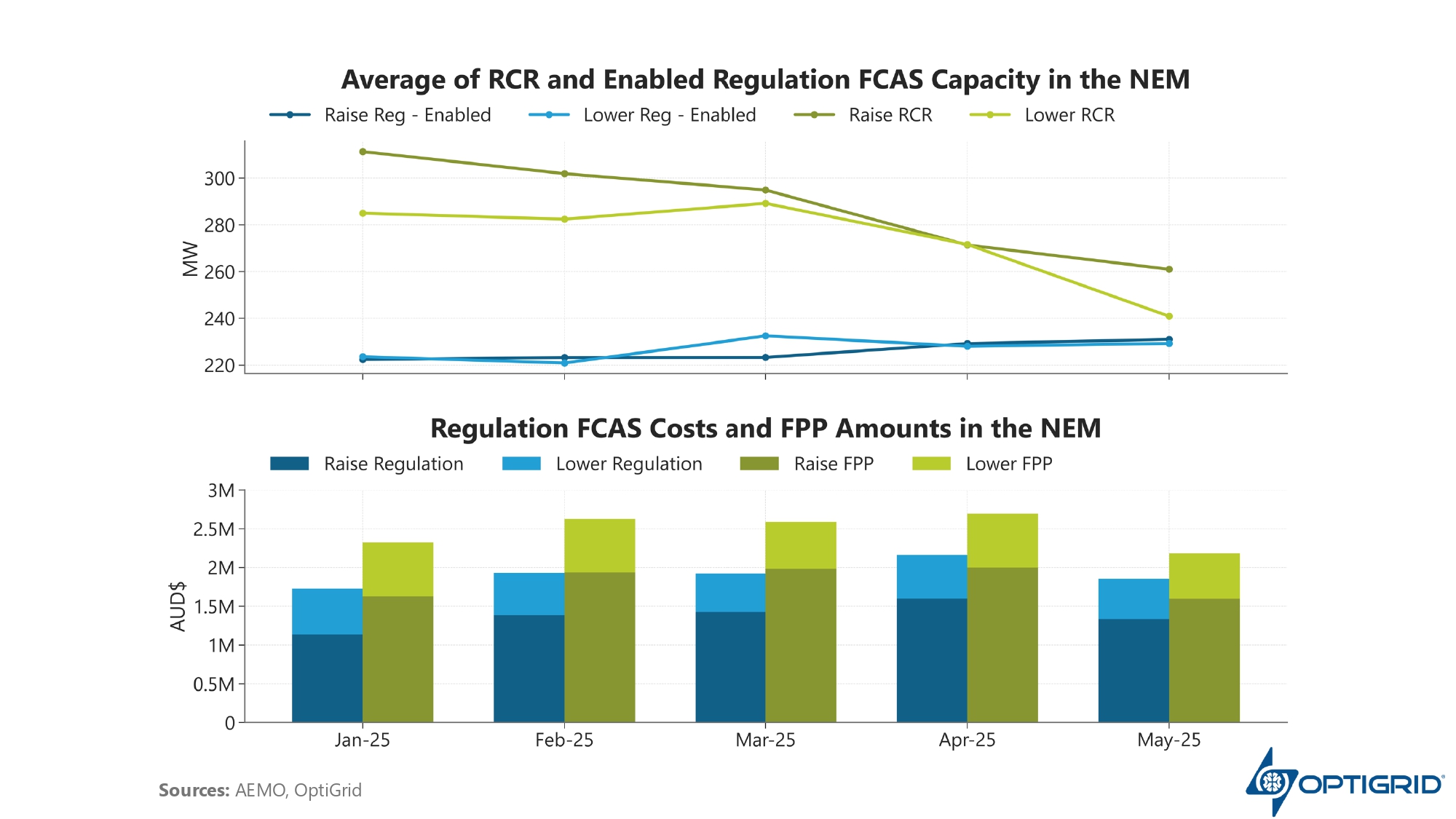
As of this week, AEMO’s Frequency Performance Payment (FPP) procedure has become financially operational, changing how generators, large loads and batteries are rewarded (or penalised) for their real-time impact on system frequency.
Under the new regime:
1 – FPP introduces double-sided performance payments, rewarding helpful frequency response and penalising poor performance.
2 – It replaces the old Causer Pays method for recovering Regulation FCAS costs.
The scale of new performance payments is based on two factors: the price of Regulation FCAS and the Requirement for Corrective Response (RCR). Using 2025 data, we’ve compared RCR against enabled capacity of Regulation FCAS in the NEM — and on average, RCR has consistently been larger, which is expected from how it’s calculated.
This is why total FPP amounts consistently exceed total Regulation FCAS costs. That said, most units will receive both positive and negative FPPs over time, and the net transfer between units is likely to be significantly smaller than the total FPP amounts.
Batteries will be one of the winners of this change. Their ability to follow dispatch targets closely and respond quickly to frequency deviations means they tend to earn a significant share of positive FPPs.
At OptiGrid, we’re continuing to track these trends and help operators make sense of the impacts. Get in touch if you’d like to understand what this could mean for you.
Subscribe to our newsletter